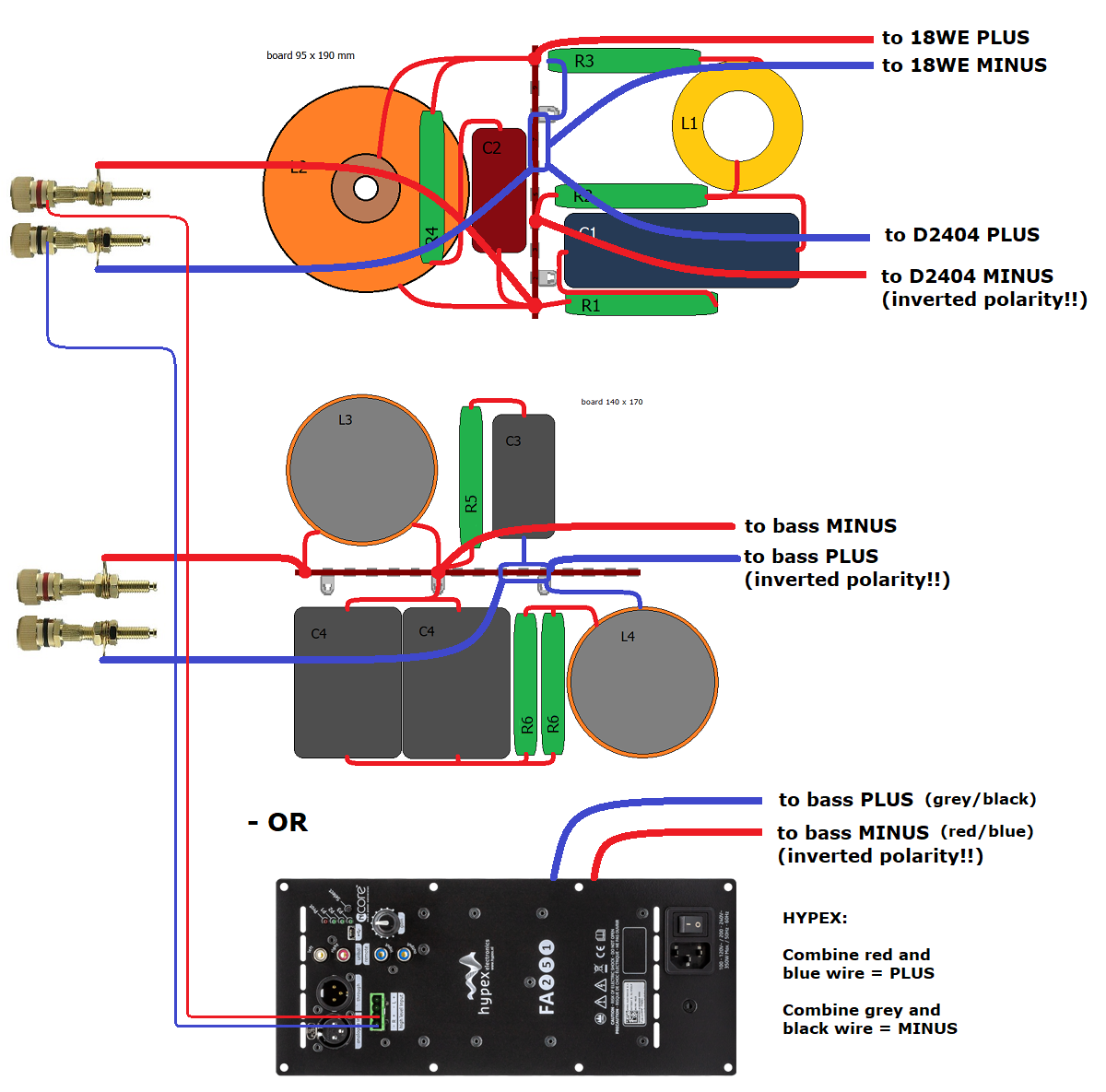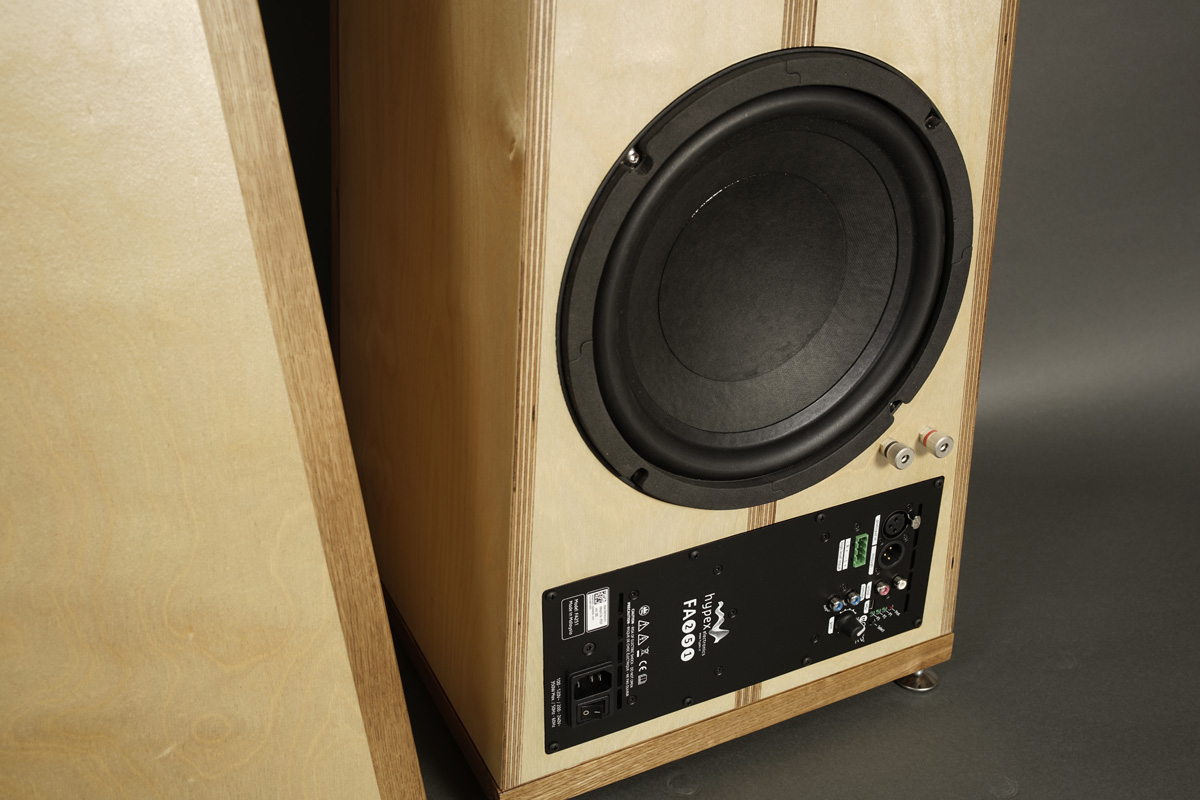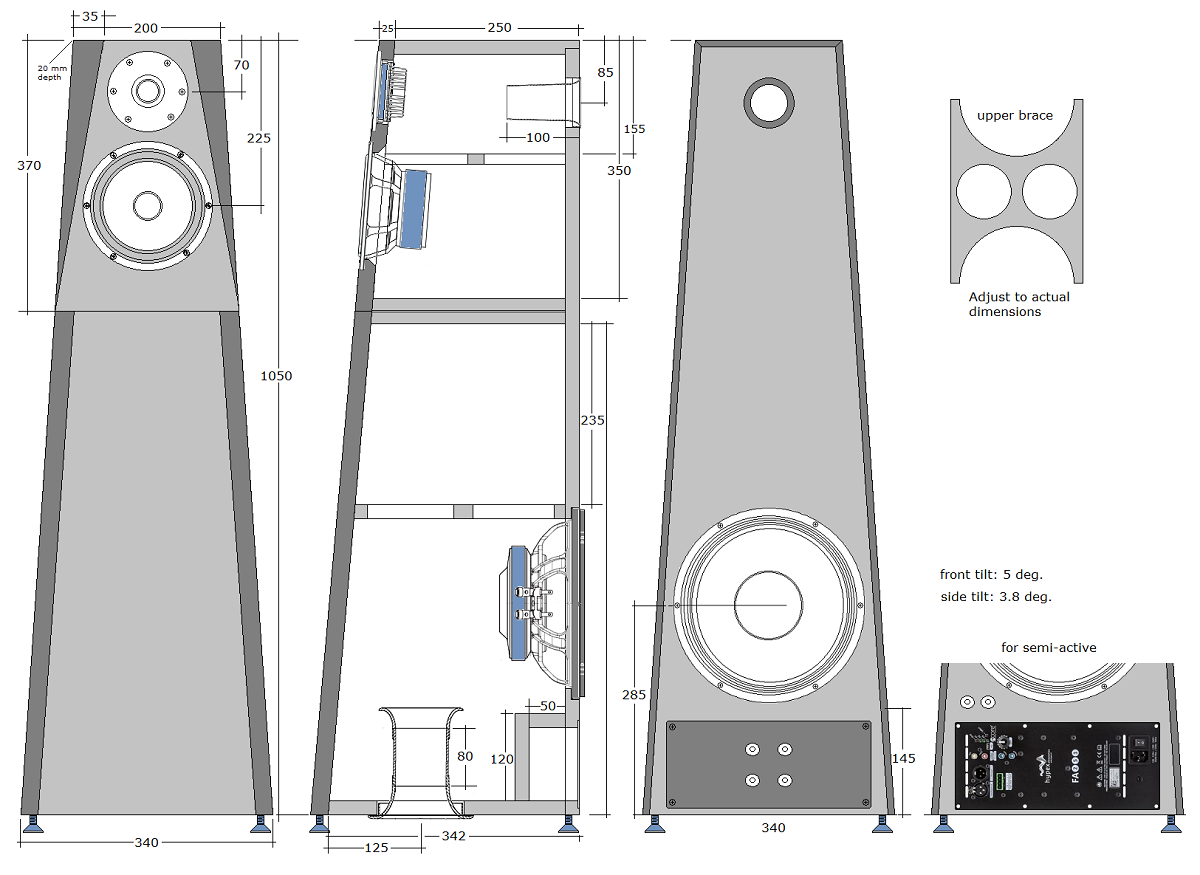SEAS
NEXTEL-2F
Copyright 2023 © Troels Gravesen
Go to on this page:
DRIVERS CROSSOVER CABINET WORKSHOP PICS MEASUREMENTS
SPEAKER-KIT CROSSOVER LAYOUT HYPEX PROGRAMMING
When I made the
Ellipticor-2F8 cabinets, I made several upper front panels to allow
the use of various brands of drivers. The bass module is more than
suitable for a wide range of drivers, thus here a version with the
updated SEAS W18NX003 midbass and my all time favourite SEAS tweeter,
the Crescendo T29CF002.
This speaker can also be regarded as a downscaled version of my
CNO-4.
The CNO-4 is a seriously large speaker and not all can accommodate
speakers this size.
Like the CNO-4, the filter can be made really simple due to the linear
frequency response of drivers. Midrange clarity and crystal clear
treble, fed through state of the art crossover components.
Combined with the powerful Faital 10" bass driver driven by the Hypex
module allows you unlimited room adaption. Corner placement, near-wall
placement and out on the floor, the Hypex module allows you to adjust
the bass performance to any room condition.
Fully passive version available should you not have any room
constraints.
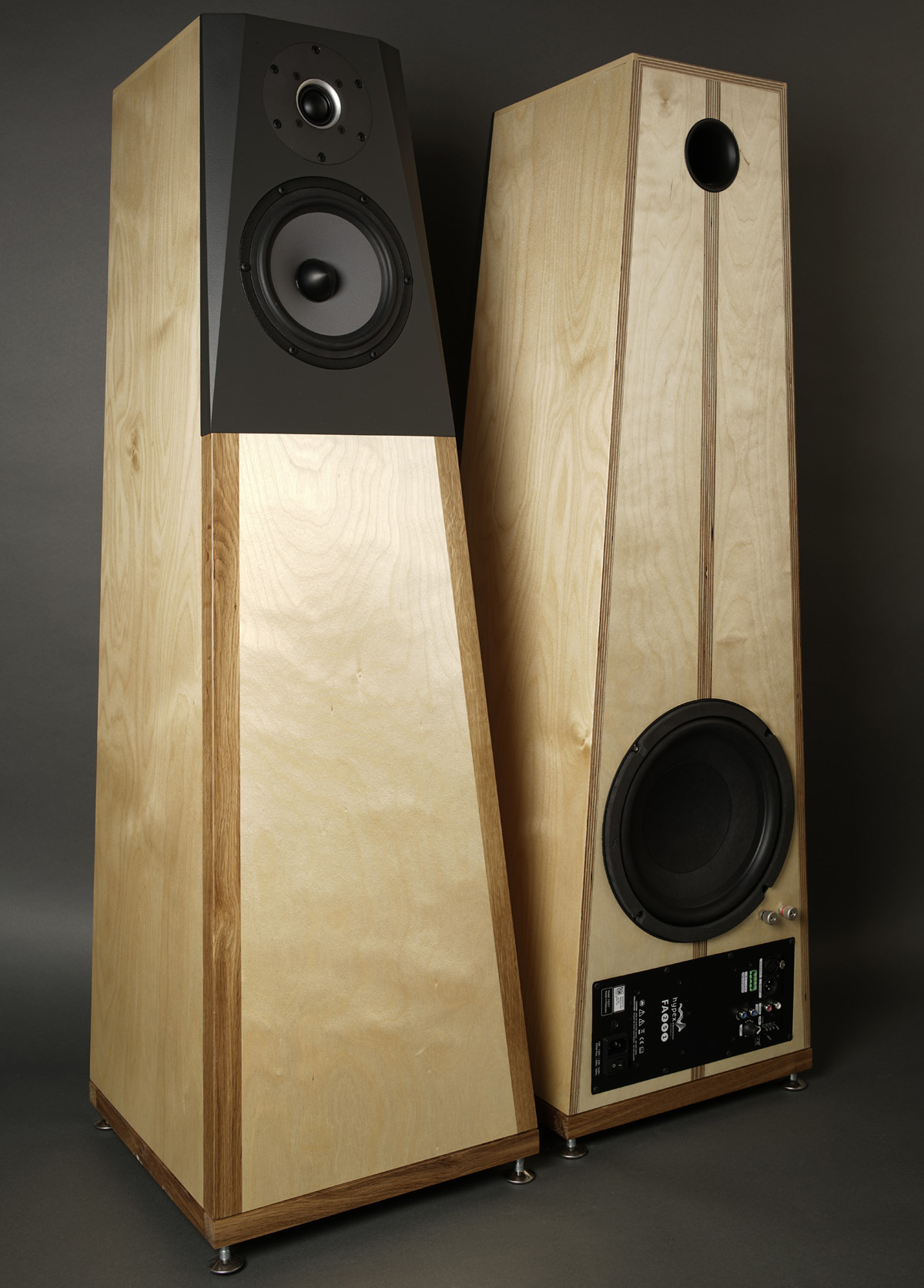
Basics:
3-driver speaker.
Dimensions: 20/34 x 25/36 x 105 cm, WxDxH (pyramid).
System sensitivity: 88 dB/2.8V/1 meter.
Impedance: 4-8 Ohms.
Power requirement: 20+ watts/channel.
Power handling: 100 watts.
Useful links (Please
follow all links before e-mailing!):
http://www.troelsgravesen.dk/tips.htm
http://www.troelsgravesen.dk/tips.htm#CONSTRUCTION_OF_CROSSOVERS
http://www.troelsgravesen.dk/crossovers.htm
http://www.troelsgravesen.dk/LCR-RC.htm
http://www.troelsgravesen.dk/Inverted-Polarity.htm
http://www.troelsgravesen.dk/choices.htm
http://www.troelsgravesen.dk/power-handling.htm
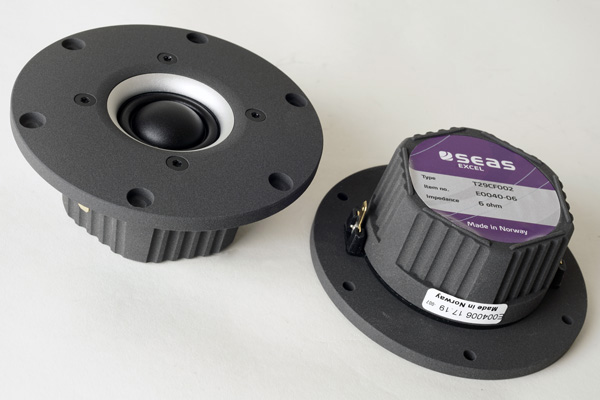
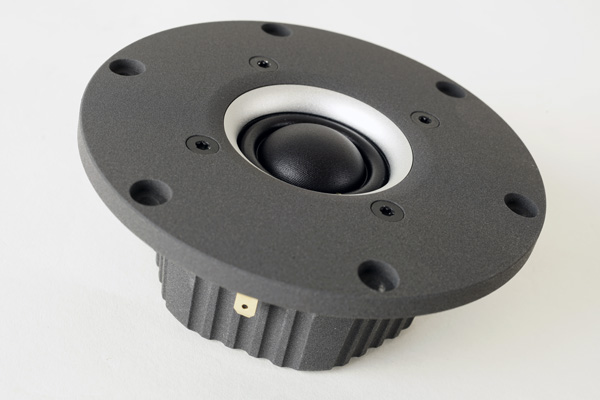
SEAS T29CF002
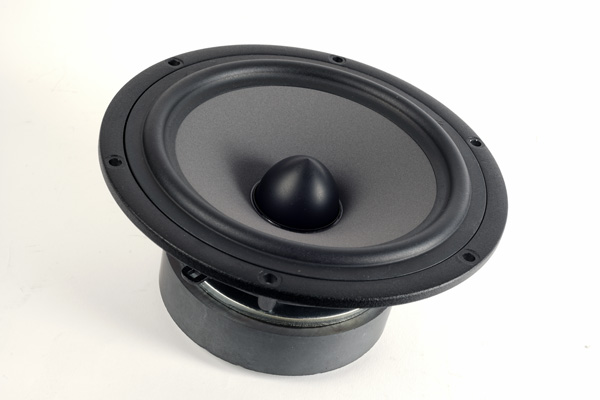
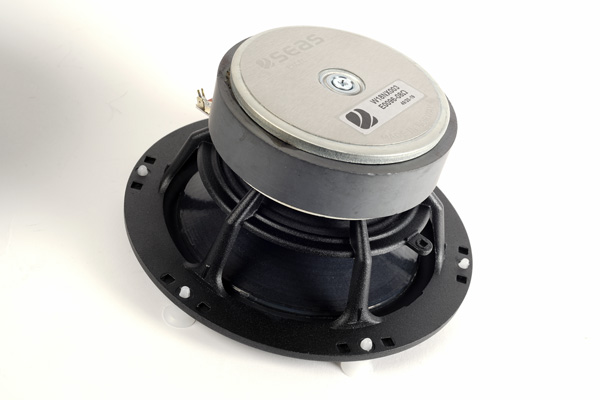
SEAS W18NX003
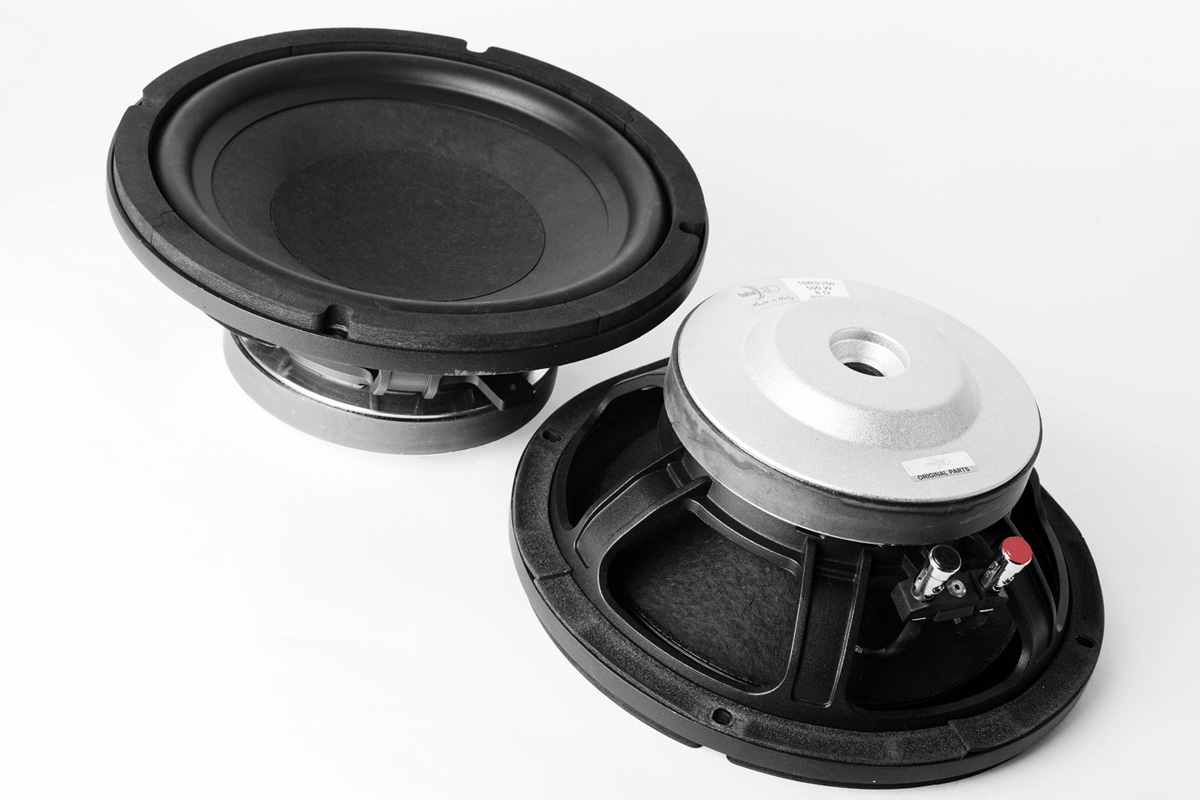
Faital 10RS350
Download spec here:
T29CF002
18WNX003
Faital
10RS350
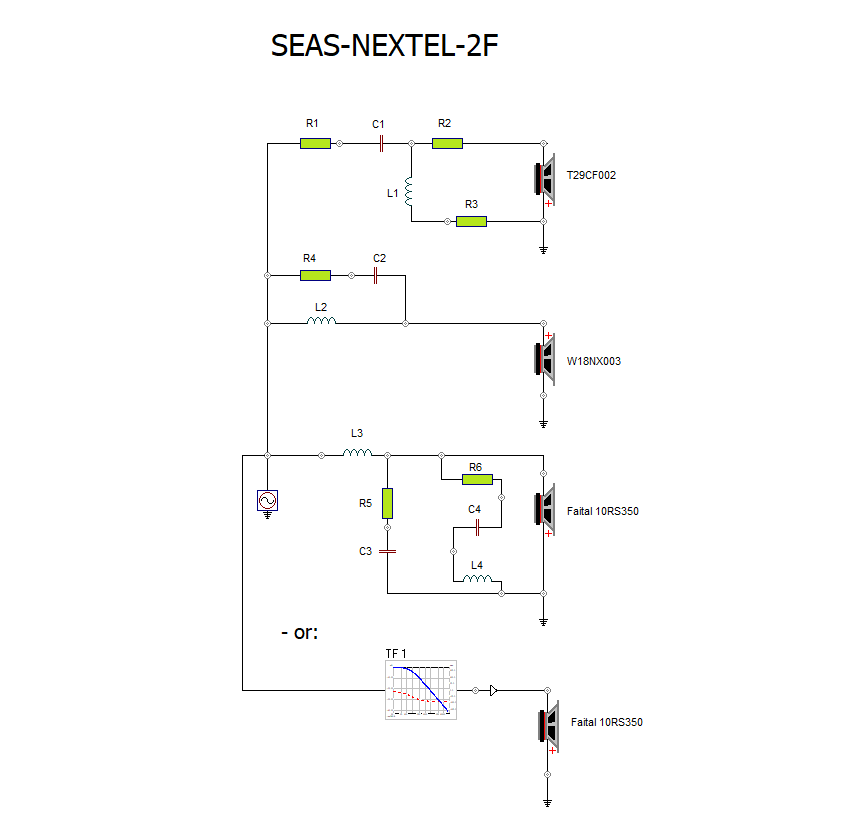
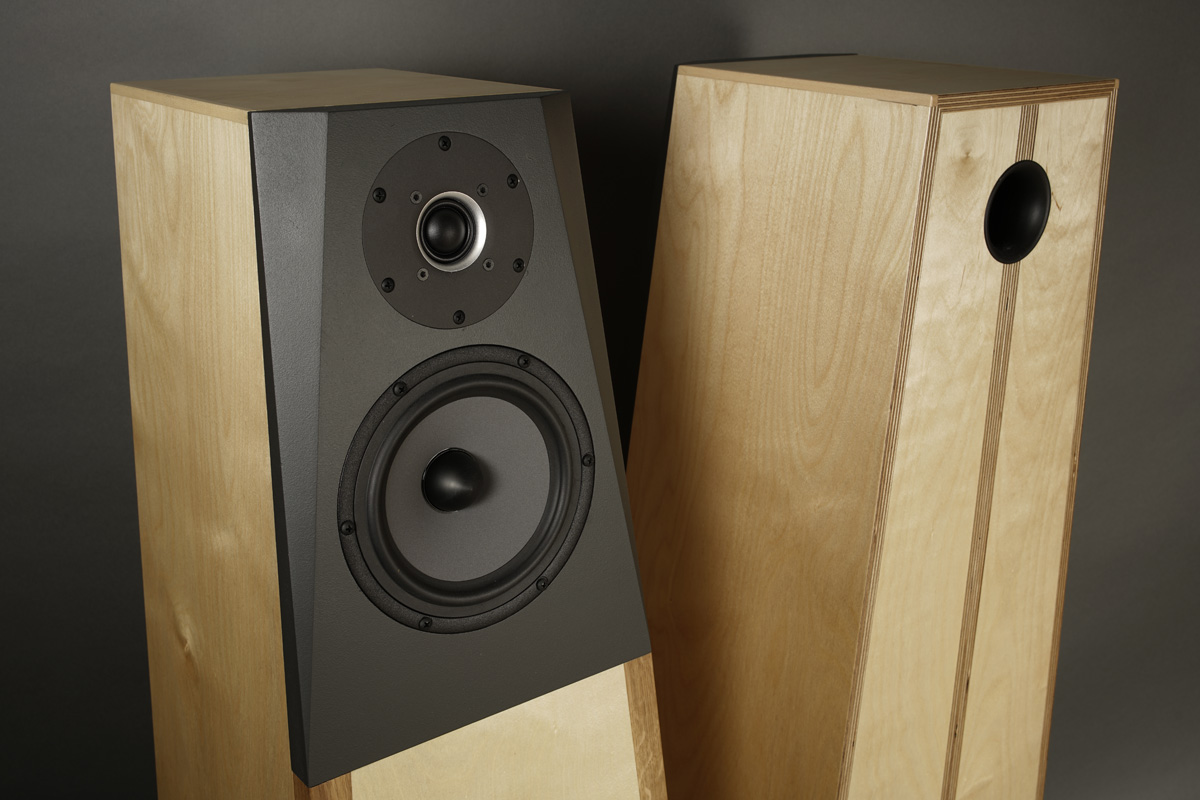
Go to ScanSpeak Ellipticor-2F for details.
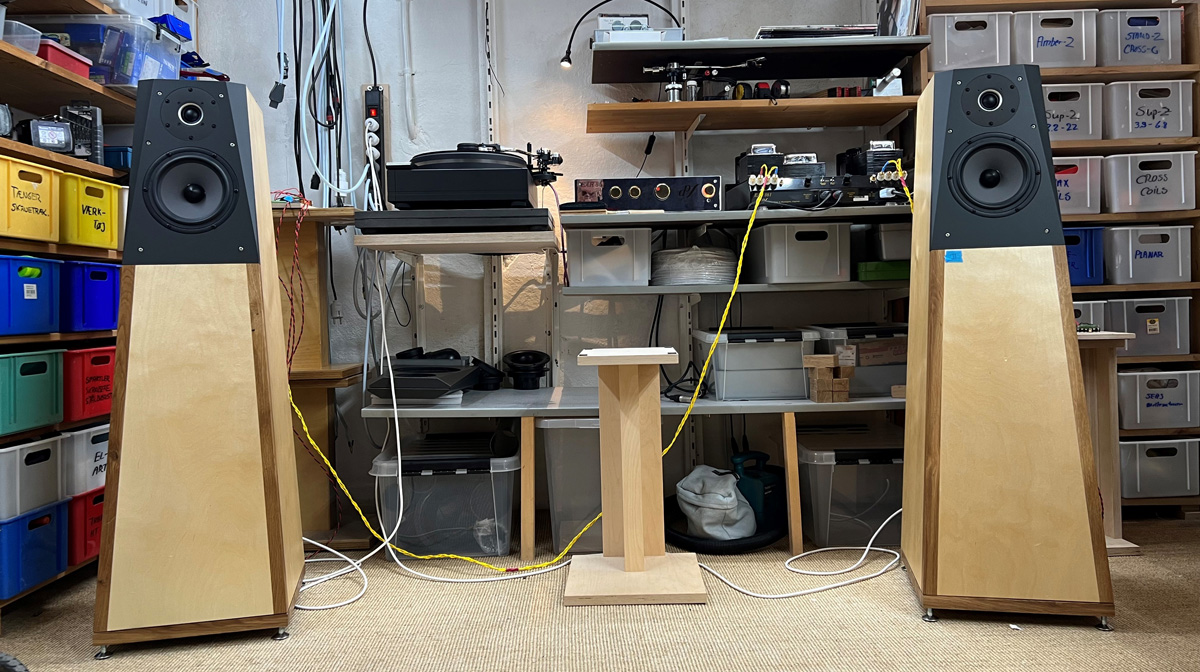
Workshop setup during crossover fine-tuning.
A few comments on
MEASUREMENTS before you start interpreting the readings below.
First of all, if we think measurements will
tell us how a speaker sounds, we're wrong. The perception of sound is
way too subjective to be reflected in any measurements we can perform. A
loudspeaker system is meant to give us a satisfying idea of an acoustic
event and for some people a pair of 5 USD ear-plugs are enough, others
spend 200 kUSD on a truly full-range pair of speakers - and the latter
may not be happier than the former.
Measurements may give us an idea of tonal balance of a system, i.e. too
much or too little energy in certain areas, although dispersion
characteristics play a vital role here. A two-way 7+1 and a three-way
7+4+1 may display similar horizontal dispersion, yet sound very
different. Measurements may tell us about bass extension if far-field
measurements are merged with near-field measurements. In addition to
this, ports may contribute to bass extension. Most of we diy'ers do not
have access to an anechoic room for full-range measurements from
20-20000 Hz.
What cannot be seen is what kind of bass performance we get in a given
room. Bass performance is highly dependent on in-room placement of your
speaker and the same speaker can be boomy in one place and lean in
another. Actual SPL level at 1 meter distance and 2.8V input is useful
for en estimate of system sensitivity and combined with the impedance
profile may give an idea of how powerful an amplifier is needed to drive
the speaker to adequate levels.
What measurements do not tell is the very sound of the speaker unless
displaying serious linear distortion. The level of transparency, the
ability to resolve micro-details, the "speed" of the bass, etc., cannot
be derived from these data. Distortion measurements rarely tell much
unless seriously bad, and most modern drivers display low distortion
within their specified operating range.
Many people put way too much into these graphs and my comments here are
only meant as warning against over-interpretation. There are more to
good sound than what can be extracted from a few graphs. Every graph
needs interpretation in terms of what it means sonically and how it
impacts our choice of mating drivers, cabinet and crossover design.
What measurements certainly do not tell is the sonic signature of the
speaker, because speaker cones made from polypropylene, aluminum,
Kevlar, paper, glass fiber, carbon fiber, magnesium, ceramics or even
diamonds all have their way of adding spices to the stew. Nor do
measurements tell what impact the quality of the crossover components
add to the sound, from state of the art components to the cheapest of
coils and caps, they all measure the same if values are correct, yet
sound very different.
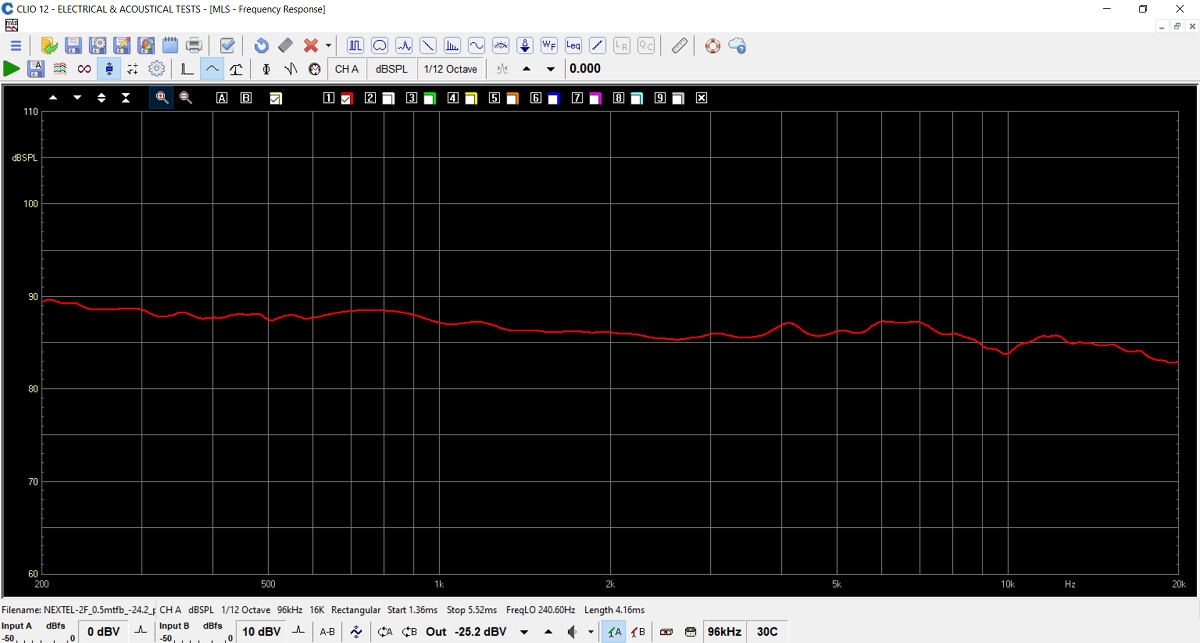
Frequency response displaying a system
sensitivity around 88 dB/2.8V/1 meter.
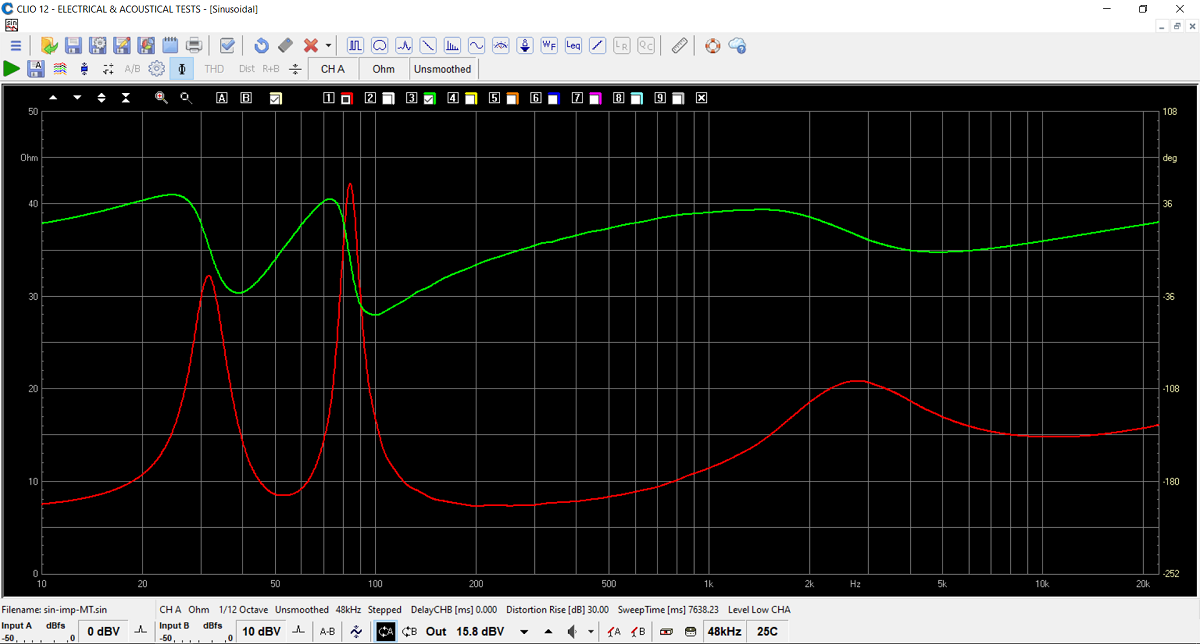
Impedance of MT section. Minimum is 7.3 Ohm,
an easy load for almost any tube amplifier.
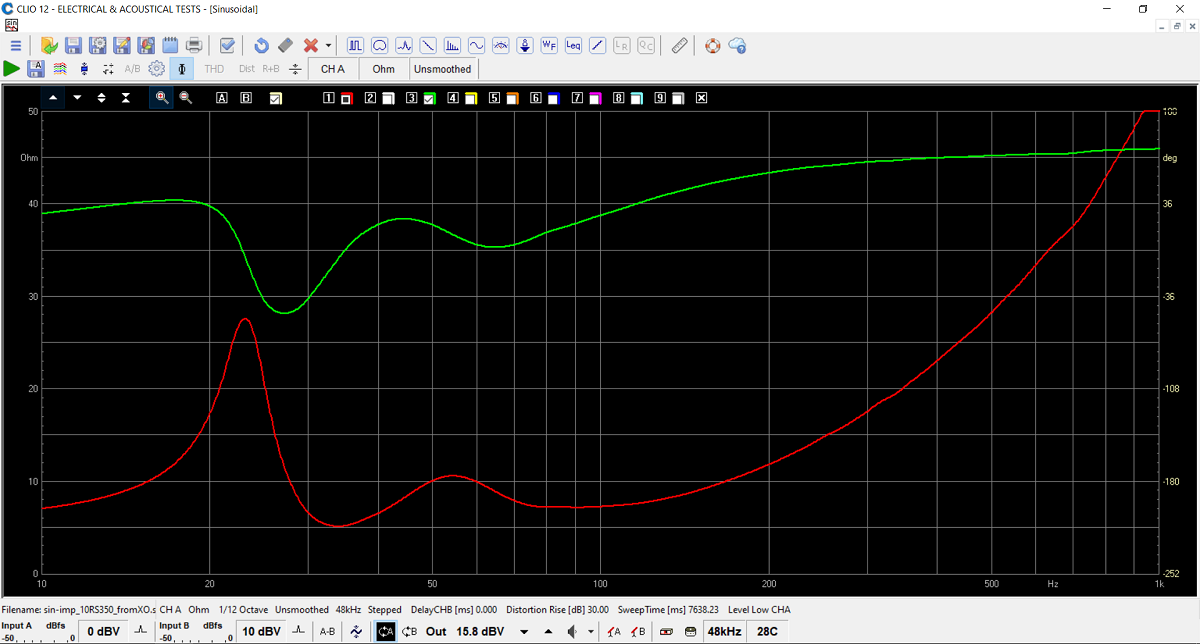
Impedance of bass alone driven from passive
crossover.
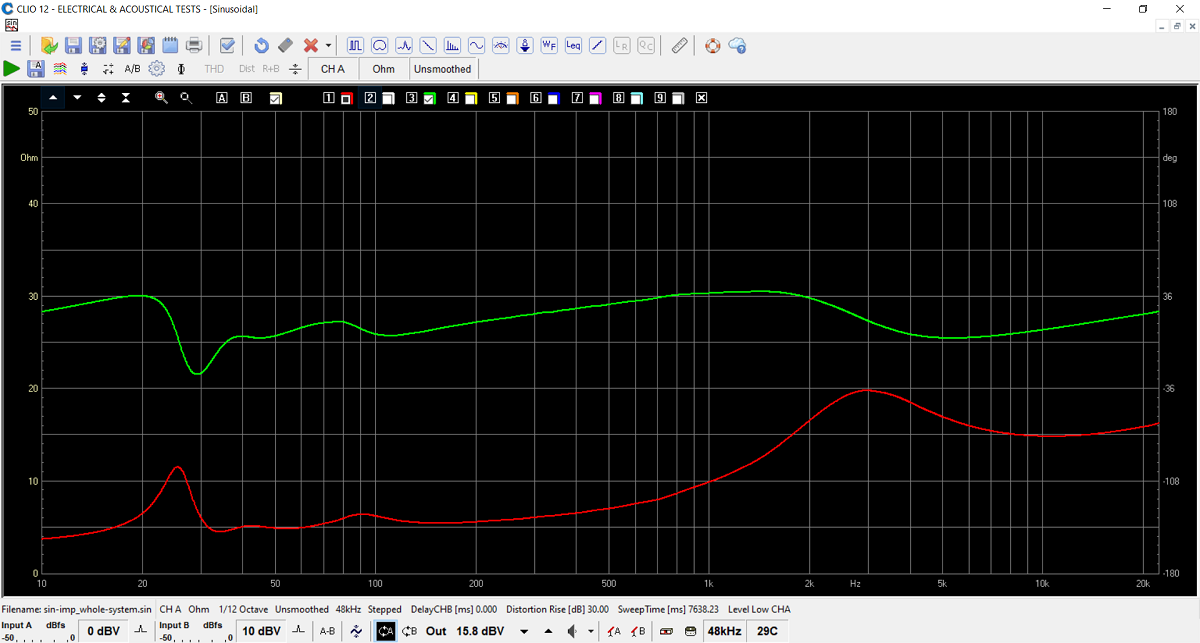
Impedance from fully passive system. Again,
an easy load.
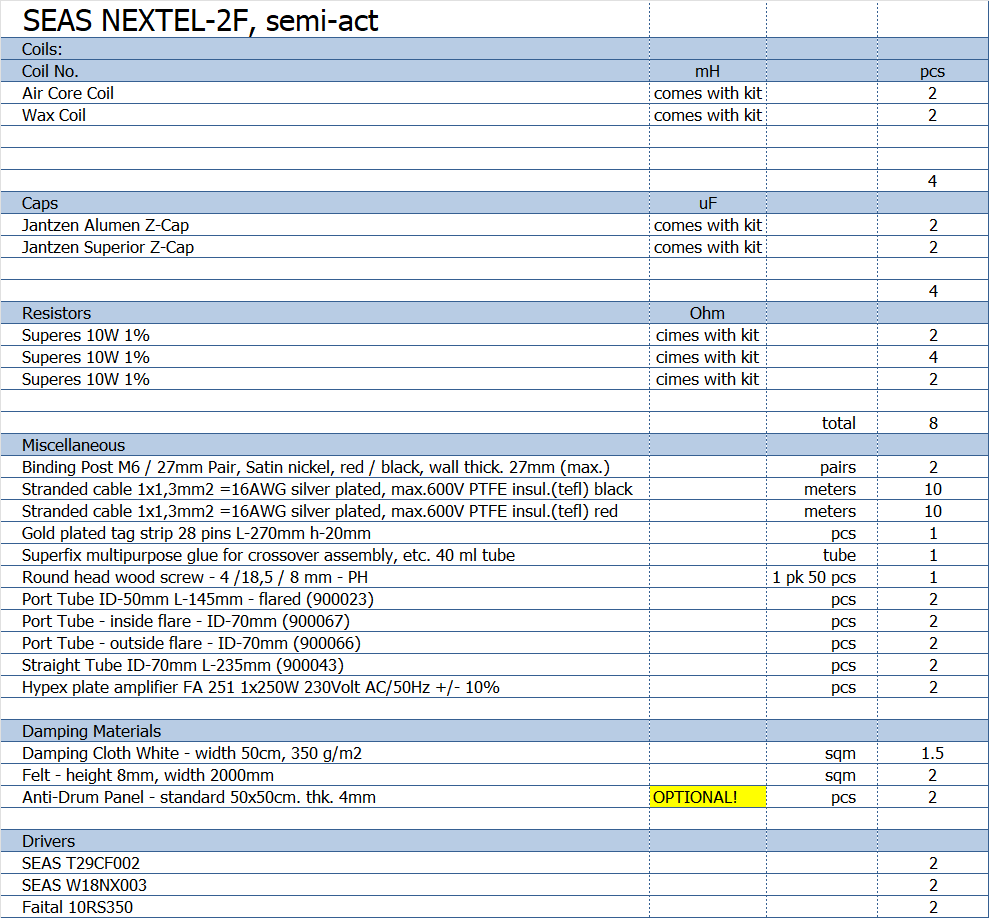
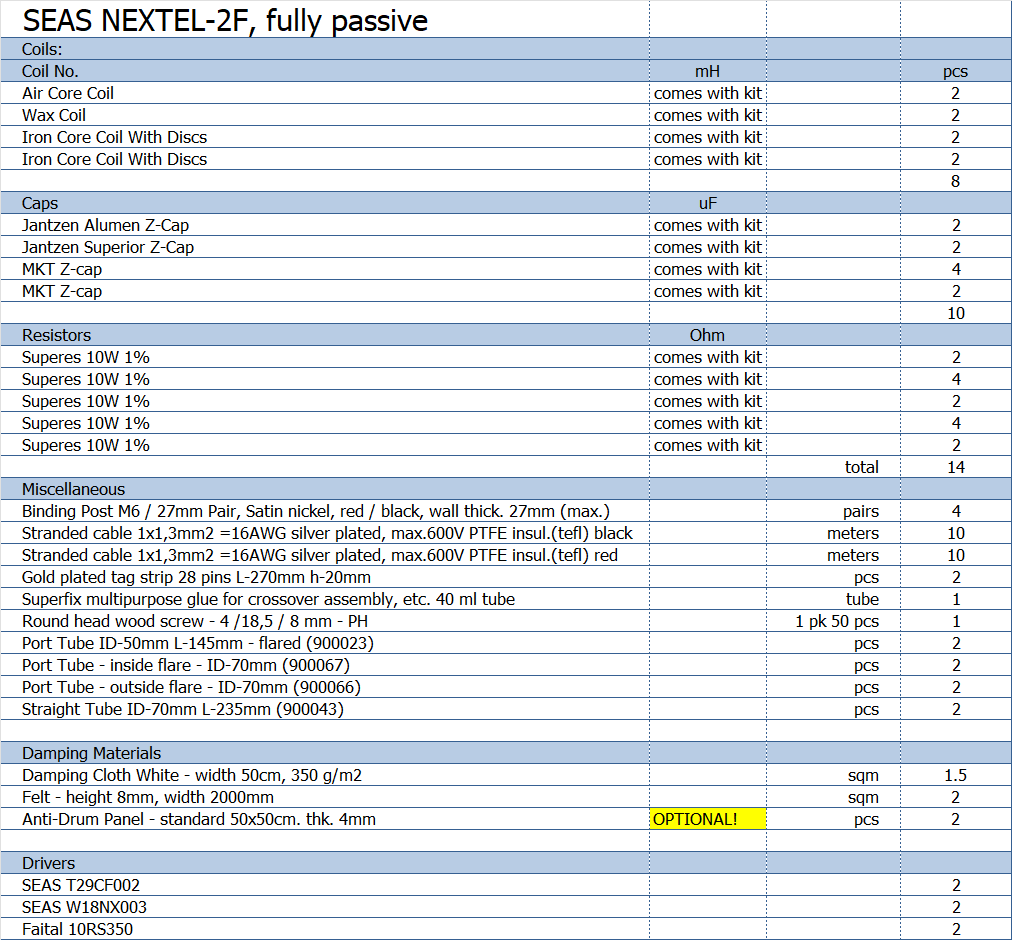
All kit and component prices may be subject to
change and are always to be confirmed by Jantzen Audio Denmark.
Kit can be bought with/without SEAS
drivers.
Download Complete Kit Sale Presentations:

All technical questions to troels.gravesen@hotmail.com
All questions regarding purchase of kits, please mail Jantzen Audio at contact@jantzen-audio.com
CROSSOVER-LAYOUT
BACK TO INDEX
Check this out before start making crossovers:
http://www.troelsgravesen.dk/tips.htm#CONSTRUCTION_OF_CROSSOVERS
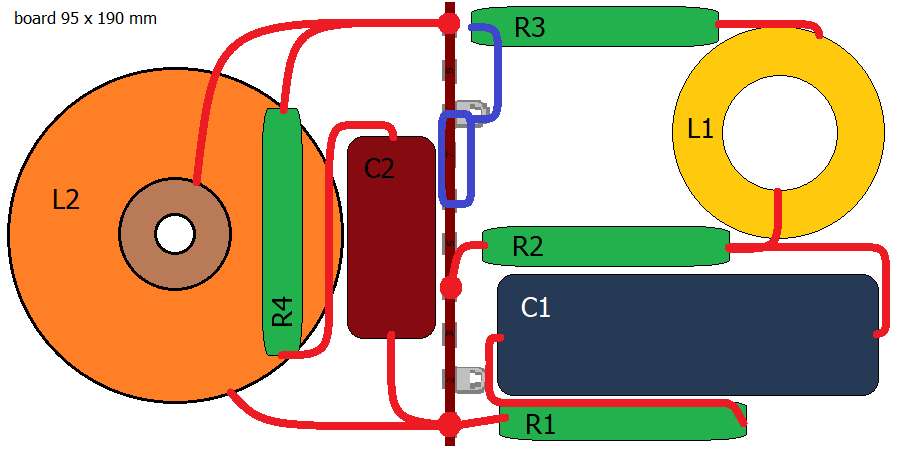
Midbass-tweeter layout.
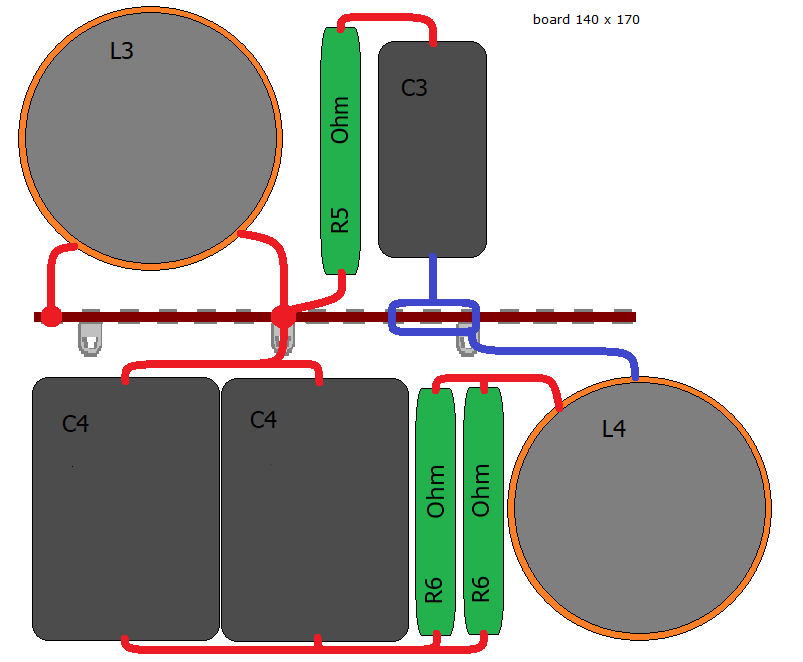
Bass layout.
Speaker wiring:
